Kenyan coffee bean varieties SL28, SL34 grading system AA, AB, PB grade flavor difference
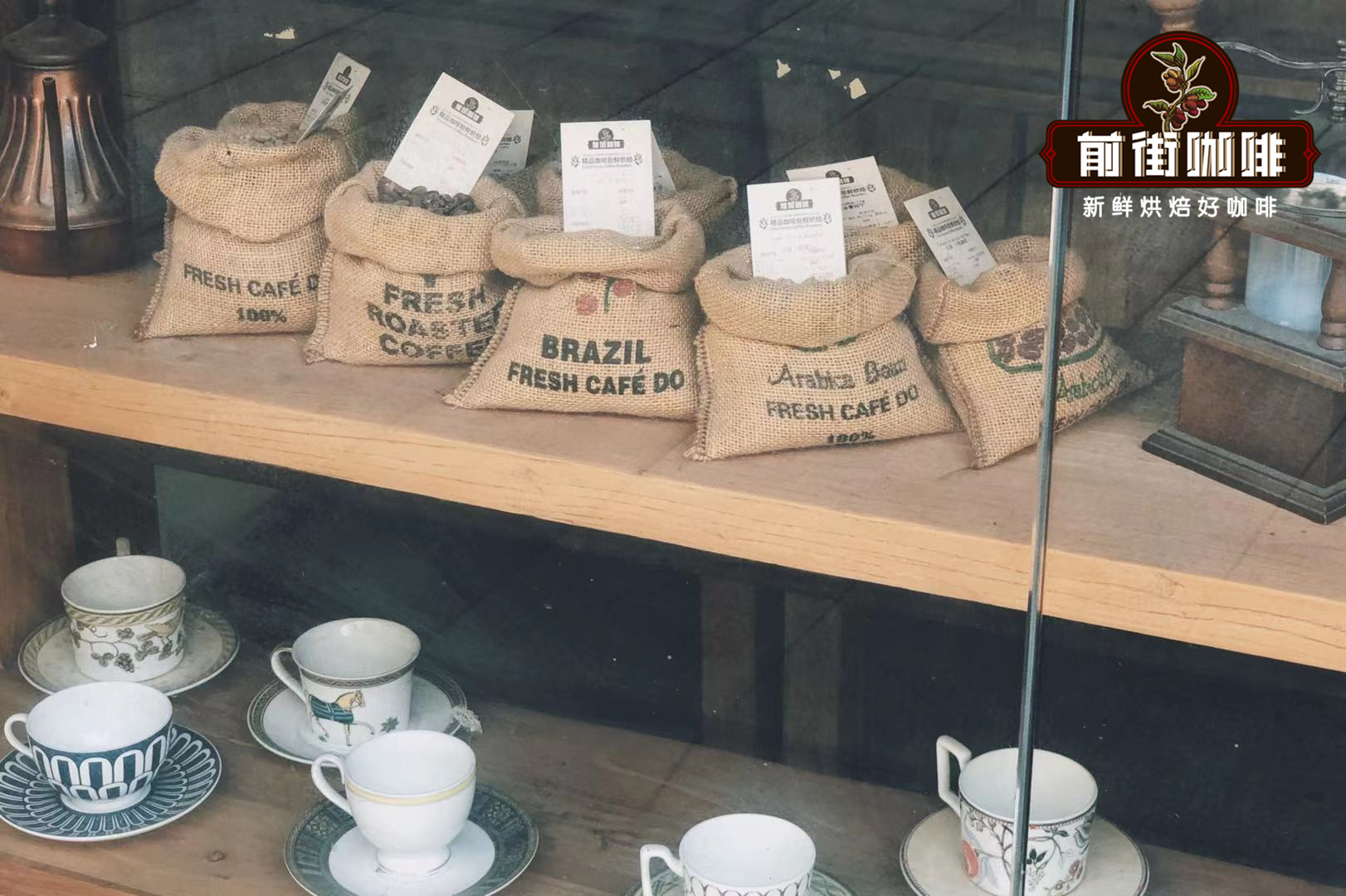
Professional coffee knowledge exchange more coffee bean information please follow the coffee workshop (Wechat official account cafe_style)
Coffee growing areas are mainly located between the Tropic of Cancer. Qianjie Coffee and everyone will generally sort out the characteristics of the distribution of coffee in the world. On the intercontinental level, coffee is mainly grown in Africa, Central America and Asia. Among them, the coffee in Asia is mainly herbal flavor, America is mainly nut balance flavor, and Africa is fruit acid flavor. Africa has always been one of the best coffee producers in the world, and is famous all over the world for its charming acidity and aroma, and Kenya is certainly not absent. Kenya is located in East Africa, right on the equator, with the Indian Ocean to the east, Ethiopia to the north and Tanzania to the south. Kenya is a big coffee country in East Africa and one of the most important and irreplaceable producers. Qianjie Coffee believes that the flavor of a bean is closely related to its own producing area, altitude, climate, treatment, and variety. Today, Qianjie Coffee will explain Kenyan coffee in detail.
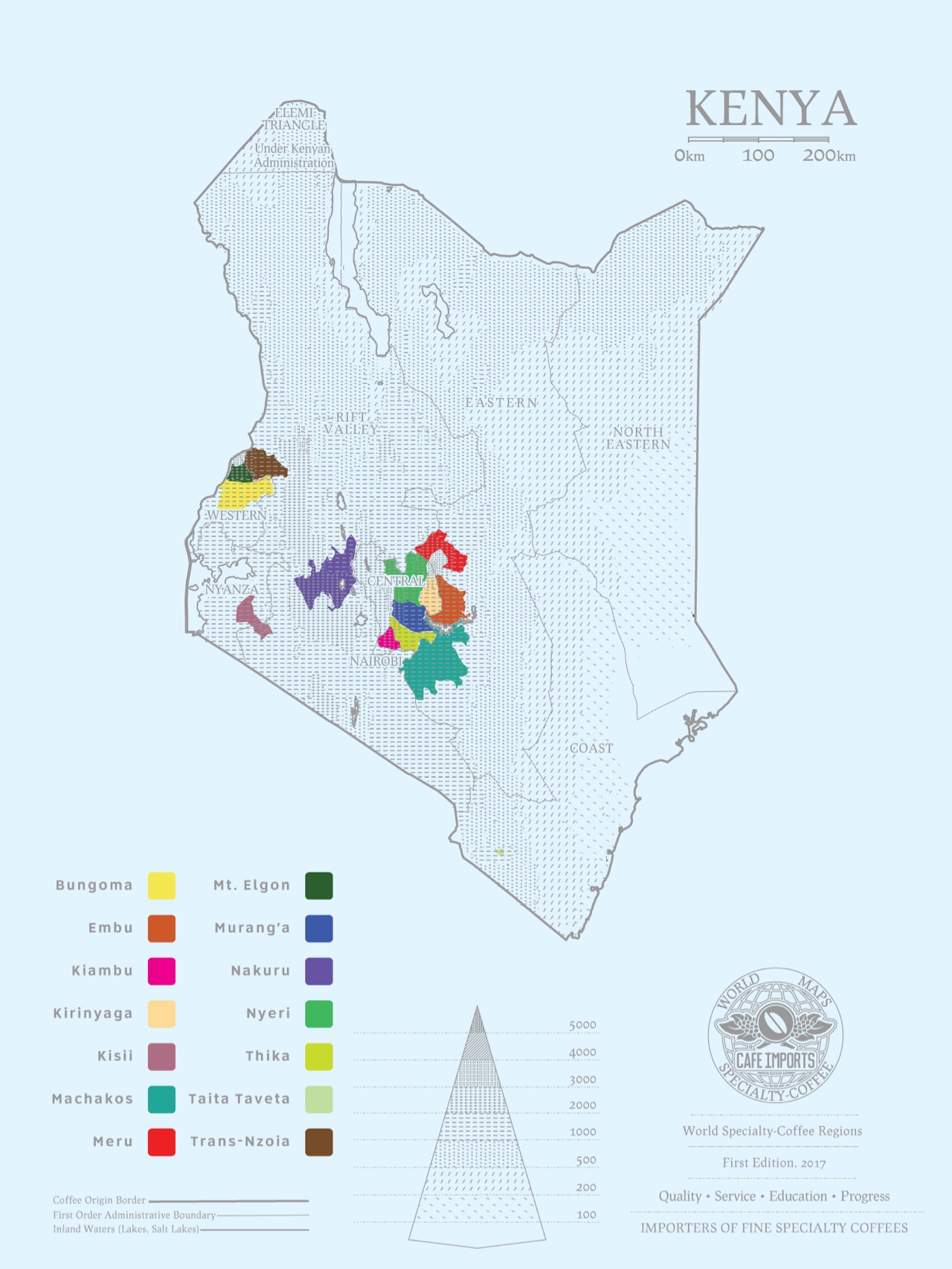
Introduction of coffee producing countries in Kenya
Kenya, the full name of the Republic of Kenya, is located in eastern Africa, the equator runs across the central part of the equator, and the Great Rift Valley of East Africa stretches north and south. It is bordered by Somalia to the east, Tanzania to the south, Uganda to the west, Ethiopia and Sudan to the north, and the Indian Ocean to the southeast. There are many plateaus in the territory, with an average elevation of 1500 meters. The central peak of Kirinaga (Mount Kenya) is 5199 meters above sea level and the top of the mountain is covered with snow, making it the second highest peak in Africa.
Altitude, latitude, geology: the equator runs through Kenya, and the border is just within ten degrees of north and south latitude. Belonging to tropical producing areas, there are two rainy seasons every year, with two harvests, with 60% concentrated from October to December and another 40% from June to August. Coffee is mainly grown in volcanic land around 1600-2100 meters above sea level from the capital Narobi to the mountains of Kenya. This height is suitable for the development of coffee bean flavor, because the mountain temperature is lower, the growth is slow, the aroma components of coffee beans have been fully developed, the sour taste is more obvious, and the texture is harder. This fertile moonbend-shaped coffee area is the main producer of Kenyan boutique beans.
Coffee is Kenya's second export product after tea. The main variety of coffee beans produced in Kenya is Arabica, which is one of the best quality coffee varieties in the world.
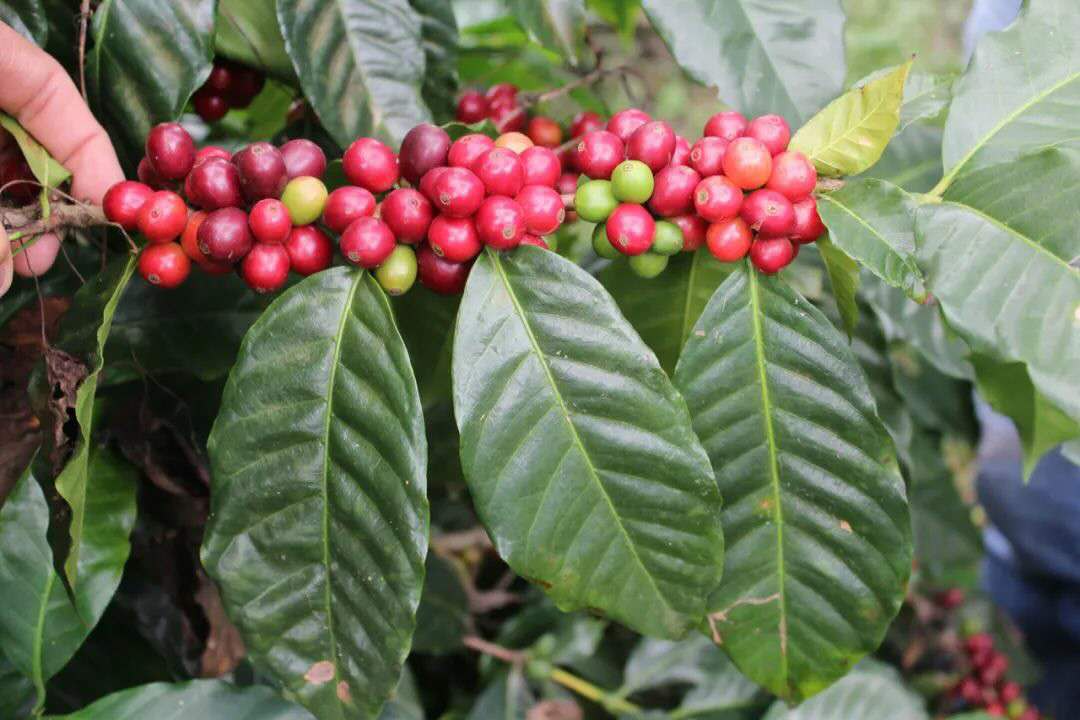
African coffee is famous all over the world for its charming acidity and aroma, and Kenya is certainly not absent. Kenya is located in East Africa, right on the equator, with the Indian Ocean to the east, Ethiopia to the north and Tanzania to the south. Kenya is a big coffee country in East Africa and one of the most important and irreplaceable producers.
Kenya is a tropical region, with two rainy seasons a year and two harvests, with 60% concentrated from October to December and 40% from June to August. Coffee is mainly grown in volcanic areas from the capital Narobi to the mountains of Kenya at an altitude of 1600-2100 meters. This height is suitable for the development of coffee bean flavor, because the mountain temperature is lower, the growth is slow, the aroma components of coffee beans have been fully developed, the sour taste is more obvious, and the texture is harder. This fertile moonbend-shaped coffee area is the main producer of Kenyan boutique beans.
History of coffee in Kenya
In 1878, the British landed coffee in Africa and set up a coffee plantation in Kenya in the 19th century, when Ethiopian coffee drinks were imported to Kenya through southern Yemen. But it was not until the early 20th century that the bourbon coffee tree was introduced to Kenya by the St. Austin Mission (St.AustinMission). After Kenya became independent in 1964, the coffee industry continued to develop on its existing basis and is now a world-renowned high-quality bean-producing country. In particular, they have established an auction system to successfully get rid of the disadvantages of exploiting small farmers in other bean-producing countries (from which the so-called "fair trade coffee" comes from).
Kenyan coffee varieties
In Kenya, the common varieties are SL28, SL34, French missionary Bourbon and Ruilu 11.
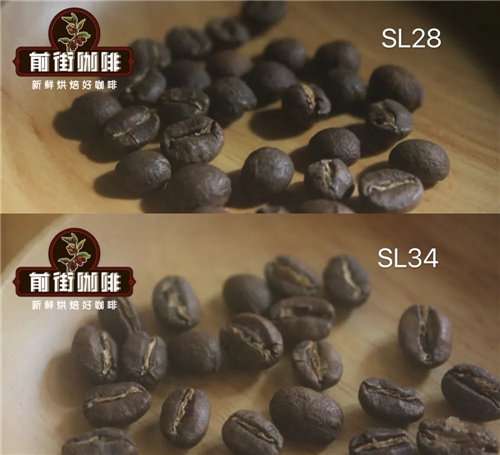
The source of SL28 varieties
According to the literature, in 1931, Scott laboratory officials spread the area to Tanganyika (now Tanzania) to conduct fieldwork. He noticed that a coffee tree variety in Moduli seemed to be resistant to drought, disease and pests, so he collected seeds and brought them back to Scott Lab. In 1935, the laboratory selected a single tree species from Tanganyika drought-resistant population and was constantly improved by breeding. Finally, the SL28 of the offspring of Moduli was introduced, and recent genetic studies have confirmed that SL28 belongs to the bourbon gene group.
Characteristics of SL28 varieties
The SL28 variety is easy to grow without special care, has a large bean shape and high harvest, and has a high flavor. After it was released by the Kenyan authorities in the 1930s, it was first planted in Kenya and then spread to Uganda. It is now widely noticed even in Central America. This variety is suitable for medium-and high-altitude areas, has the ability to resist drought, but is still vulnerable to major coffee diseases.
Coffee flavor of SL28 variety
The flavor of the SL28 variety does have the original bourbon bright tonality, and even the rich acid of the original mocha, and has a more complex flavor and rich tactile sensation. Although the later yield of SL28 was not as large as expected, the copper leaf color and broad bean-shaped beans have great sweetness, balance and complex flavor, as well as remarkable citrus and black plum characteristics, strong and rich acidity, full-bodied taste and beautiful balance. The most special thing is that only when planted in Kenya can SL28 have such a distinct tonality, and SL28 varieties grown in other countries only have similar flavors.
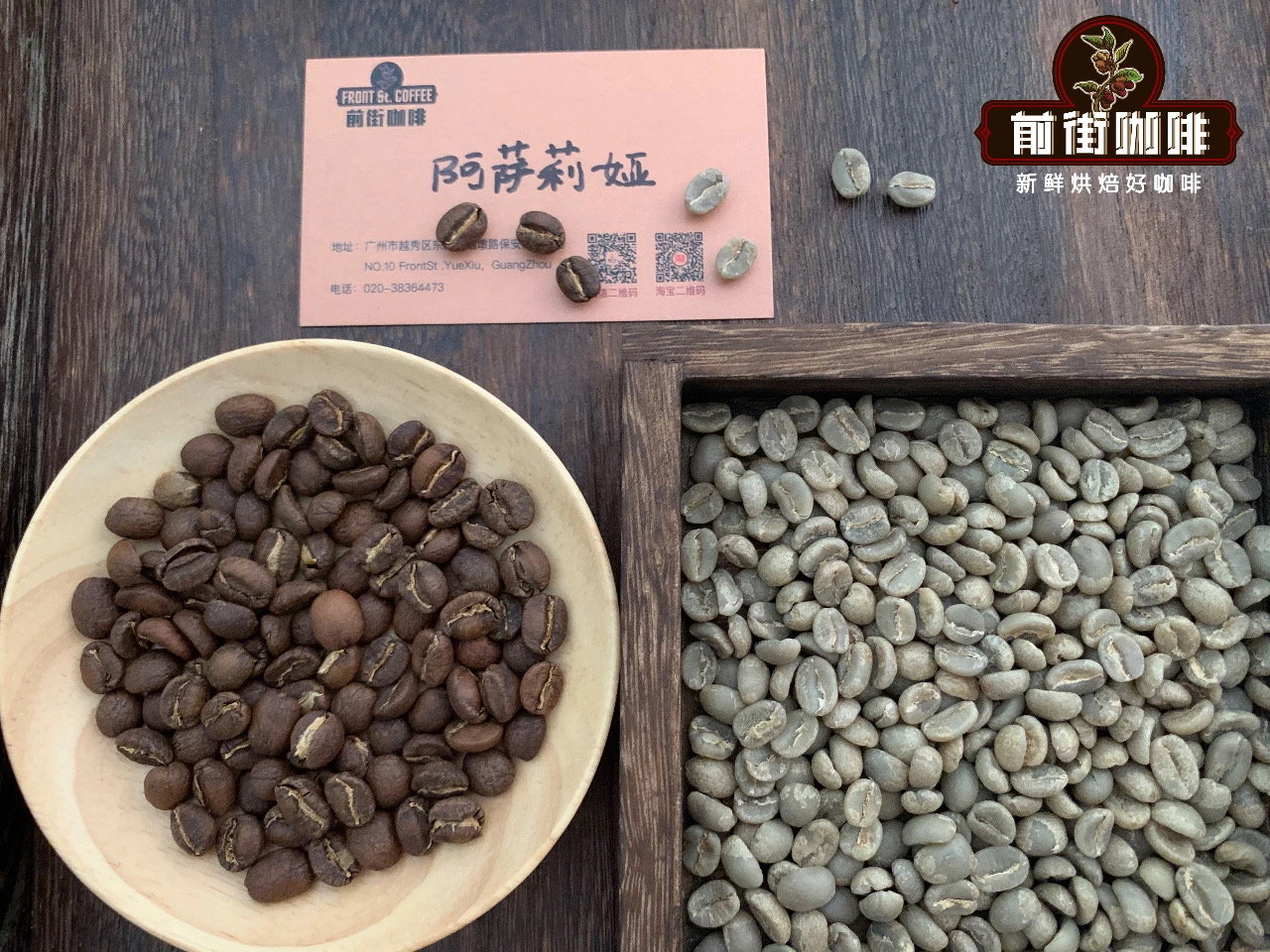
Front Street Coffee Asalia Asali Coffee, Kenya
Producing area: Sika Thika, Kenya
Processing plant: Asali honey processing plant
Altitude: 1550mi 1750m
Rating: AA TOP
Variety: SL28,SL34
Treatment: 72-hour washing in Kenya
Baking suggestion
This bean is full and round, and in order to fully show its bright and mellow acid, it is baked in a light degree.
Machine: Yang family 800N, raw bean 550g
Input bean temperature: 200℃
Flashpoint: 5 minutes 39 percent 30 ", 154.3 ℃
After one explosion, the development was 2: 10 ", 191.6 ℃ came out.
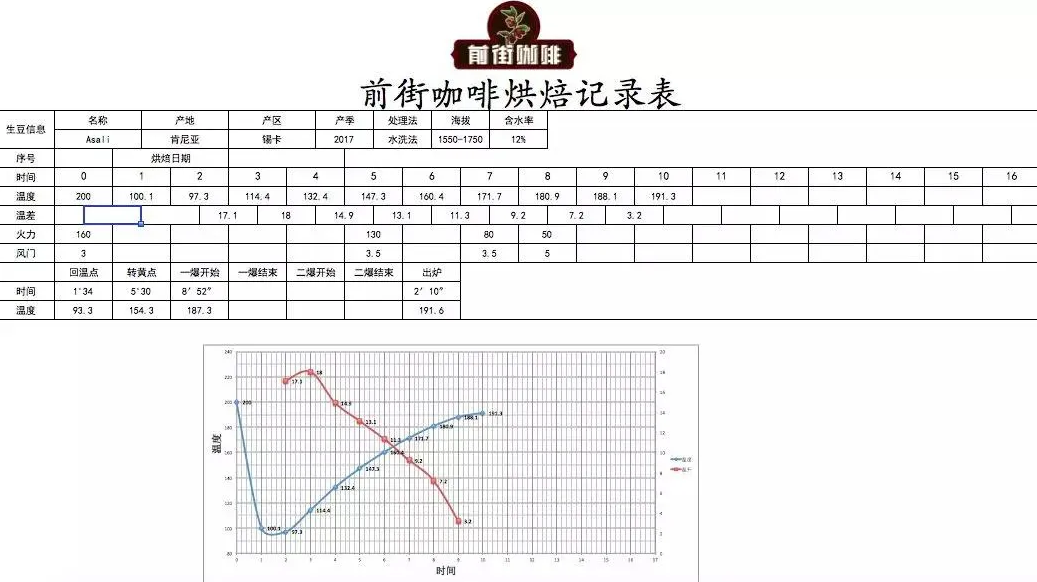
Cooking suggestion
Filter cup: Hario V60
Water temperature: 90 ℃
Amount of powder: 15g
Powder / water ratio: 1:15
Degree of grinding: medium and fine grinding (BG#6S)
Washing and cooking technique
Segmented extraction
Steam with 30 grams of water for 30 seconds, small flow circle injection to 125 grams, continue to inject water to 225 grams when the water level is about to be exposed, remove the filter cup when the water level is about to expose the powder bed, (steaming starts timing) the extraction time is 2: 00 ".
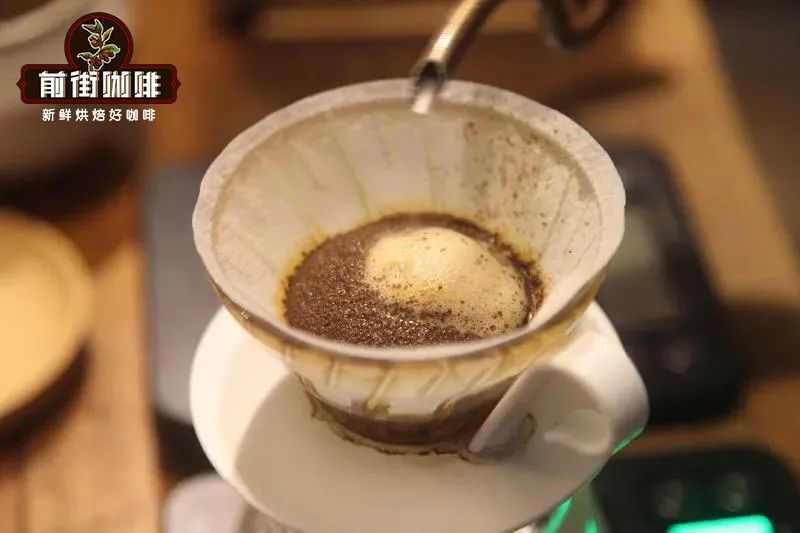
Flavor description
Wet fragrance with ripe tomatoes and flowers, imported virgin fruit and black plum flavor, bright acidity, clean and the most solid and rich taste, like the weight of an African elephant! The middle part is sweet and juicy, with sweet berry and yellow sugar on the finish, with aromas of green tea.
SL34 variety
SL34 was originally selected in Scott Agricultural Laboratories, Kenya in the 1930s. Scott Laboratories in Kenya was selected from individual coffee trees between 1935 and 1939 and was named "SL". SL34 is a single coffee tree selected from Loresho Manor in Kabete, Kenya. The coffee tree is labeled "French Mission French Mission".
French missionaries like the Spiritans Holy Spirit established a missionary in Bura in the Taita Mountains of Kenya, introducing bourbon coffee seeds from La R é union island (Reunion Island). In 1899, coffee seedlings were brought from the village of Bura to other French missionary areas in Saint Austin, and these coffee seeds were scattered in the area to produce coffee beans. This is the allusion of the so-called French Mission coffee French Mission Coffee.
Coffee seeds from the island of Reunion have historically been spread through French missionaries, and the French Mission French Mission is considered a nickname for bourbon coffee. However, today's genetic assays have confirmed that SL-34 has the gene group of Typica. It turns out that the legendary SL-34 was selected from the French mission French Mission Coffee Group, which is probably not correct.
SL34 is a variant between Typica and Bourbon, which is different from SL-28 in its copper heart leaves. It indicates that this variety is closer to the Typica variety. SL34 has a strong ability to resist heavy rain at high altitude. the coffee is of high quality with citrus acid and strong taste.
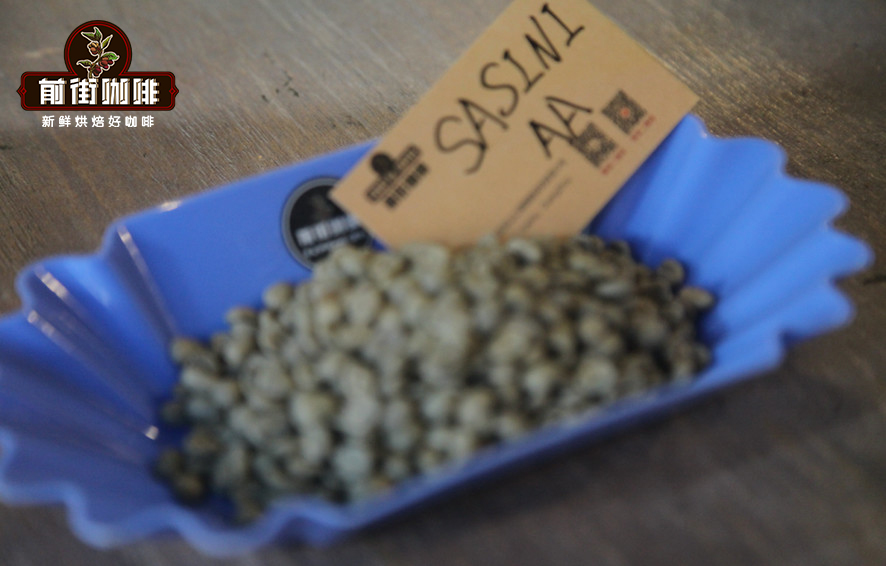
Qianjie Coffee washing AA in Sassini Manor, Kenya
Origin: Ji'anbu producing area
Manor: Sassini Manor
Altitude: 1650 m
Grade: AA
Varieties: SL28, SL34
Treatment method: washing treatment
Harvest year: 2019
Baking curve
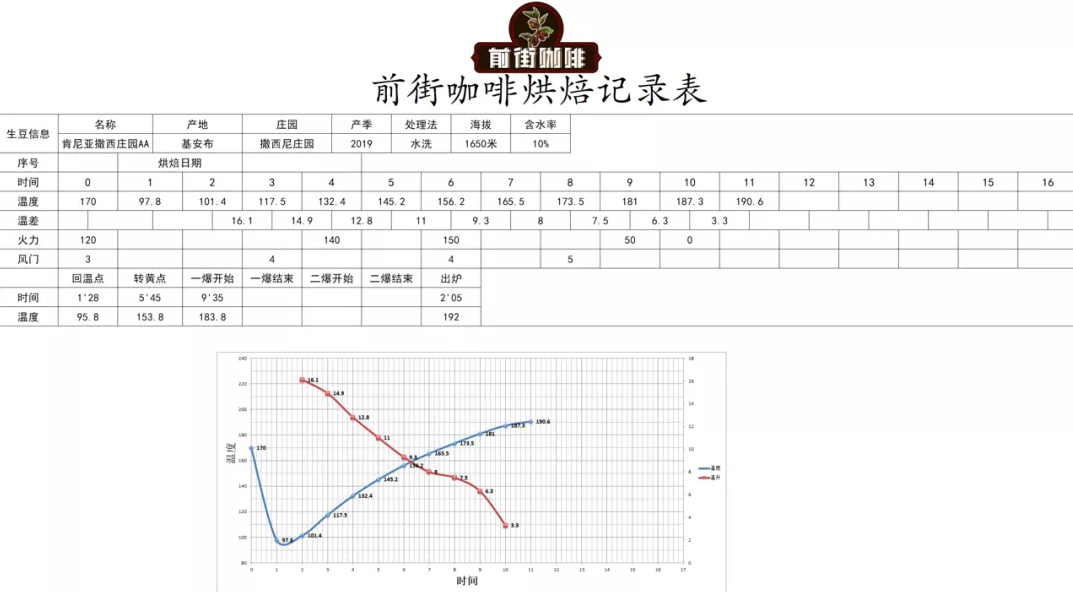
Cooking suggestion
Filter cup: Hario V60
Water temperature: 90 ℃
Amount of powder: 15g
Powder / water ratio: 1:15
Degree of grinding: medium and fine grinding (BG#6S)
Washing and cooking technique
Segmented extraction
Steam with 30 grams of water for 30 seconds, small flow circle injection to 125 grams, continue to inject water to 225 grams when the water level is about to be exposed, remove the filter cup when the water level is about to expose the powder bed, (steaming starts timing) the extraction time is 2: 00 ".
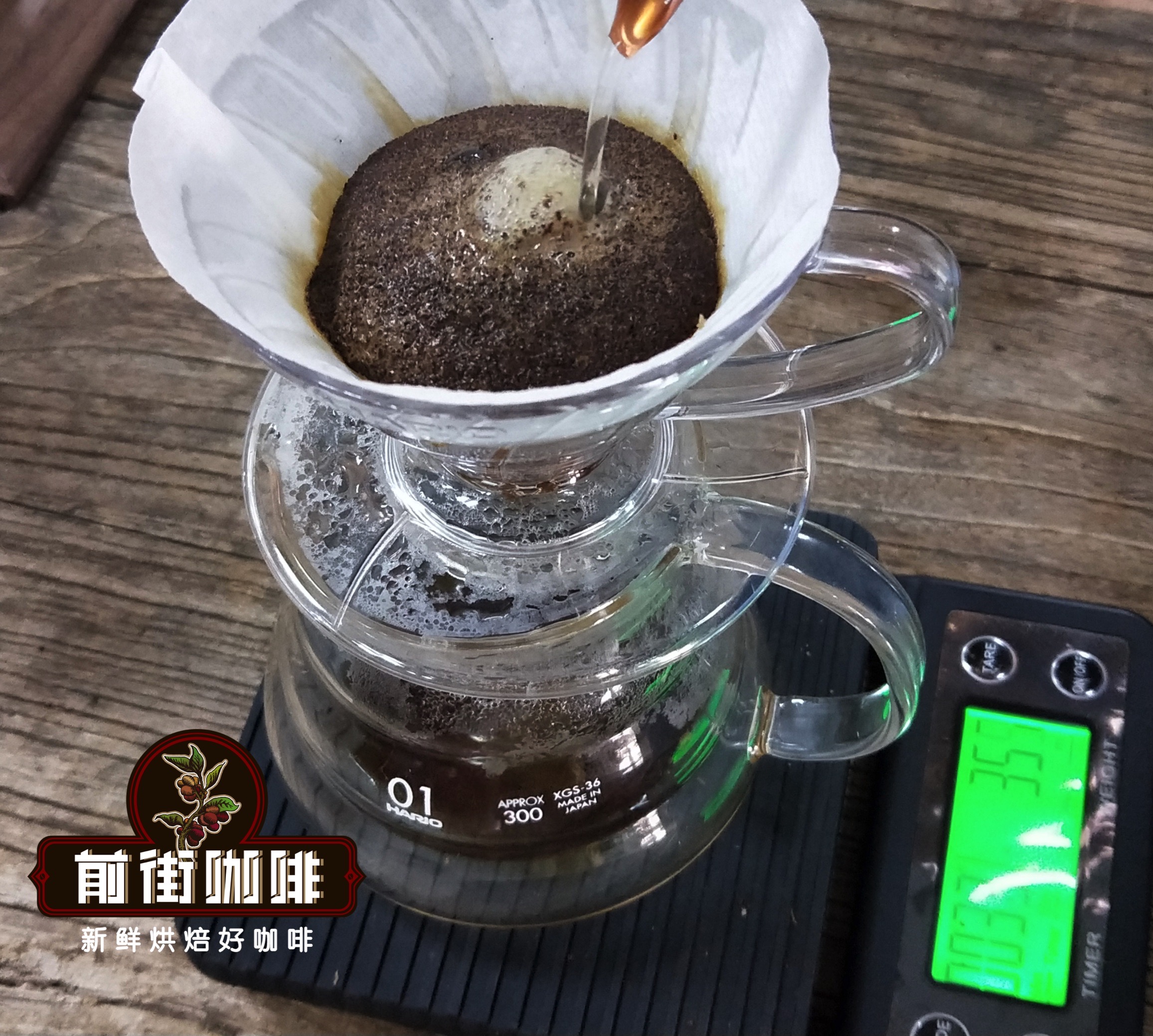
Flavor description
Obvious black plum, virgin fruit, honey, cold with slight nuts, juice-like taste, sour bright.
Ruiru 11
In 1985, with the outbreak of iron rust in the world, Kenya developed hybrid varieties with high yield and low quality, but the flavor quality was far lower than that of the previous sl28 sl34, and it did not develop in the boutique coffee industry. However, many even imported boutique coffee suppliers mix the hybrid beans with Blend to reduce costs.
Kenyan coffee grading
Kenyan coffee beans began to adopt a strict grading system in the 1930s, mainly according to the size, shape and hardness of coffee beans, divided into AA or AA+, AB, PB, C, E, TT, T, which can be selected as a basis and the flavor of coffee as a reference. At present, the common ratings in the mass market are AA,AB and PB.
E (elephant bean): the "E" here stands for "Elephant", that is, "elephant", but it is not the elephant bean in the coffee bean breed. It is a kind of bean whose development is abnormal and two seeds are intertwined with each other to form a "seemingly one" bean. Generally speaking, there are two seeds in a fruit, affixed face to face, so there will be a flat side, called flat beans, mother beans or double beans. E is two seeds in the process of growing up, stick together and become super-large beans. Aah! aah! The size of grade E particles is more than 18 mesh (one mesh is 1x64 inches) and the number is rare.
AA: the size of this grade is about 17018 items (about 6.7~7.1mm), which is the Kenyan coffee grade that most people often hear. In boutique coffee, this grade is usually called AA TOP, which is also a bean that most coffee shops will sell. But AA does not represent the best, it is just that the size of beans should not be confused with flavor.
AB: most coffee beans are in this classification, and they are called AB mainly because the filter size of An is 6.80mm and that of B is 6.20mm, and these two sizes of coffee beans (An and B) are sold together, so they are called AB, with a size of about 15 million 16 mesh (about 6.0~6.4mm).
C: the particle size falls between 14015 mesh (about 5.6~6.0mm), which is smaller than that of B grade.
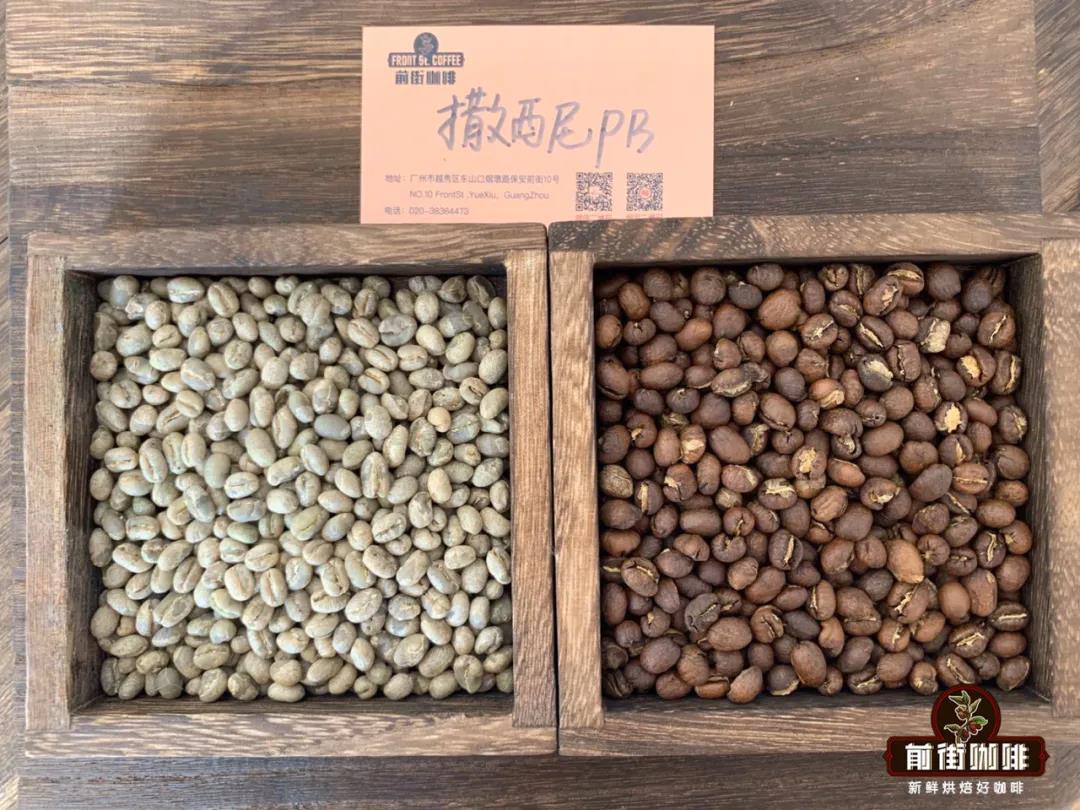
PB: it is called Peaberry in English, and Taiwan is often called small round beans, which can also be called public beans or single peas. Compared with ordinary flat beans, this is also rare, accounting for about 10% of all coffee beans, mainly because only one seed in the fruit has developed to get small and round beans. Some people will particularly like the flavor of PB, so they will pick out the PB and sell it.
TT: these coffee beans are light beans selected from AA and AB beans by air sorter. They are usually light in weight and substandard in hardness, as well as broken and defective beans.
T: lighter beans, broken beans, and even broken fragments of beans selected from C-grade beans.
MH/ML: this kind of coffee beans will not be exported. They are usually coffee beans that are overripe and fall to the ground. They are of poor quality, accounting for about 7% of all coffee beans, only for the Kenyan domestic market.
Kenyan Coffee rating-where did AA TOP and AB TOP come from?
In fact, in addition to the official version of Kenyan coffee classification, Kenyan exporters or traders also have special (unofficial) ratings for AA and AB, such as AA TOP,AA+,AA++,AB+,AB TOP and AA FAQ.
FAQ is the abbreviation of Fair Average Quality, which means average fair quality, which is the basic model of AA grade, but there is no specific standard for classification such as AA TOP,AB TOP,AA+. It does not say that two "+" will definitely taste better or taste better. Why?.
The main reason is that this is not a unified standard, each raw bean trader or different person will produce different results, which may cause the AA+ of a company to be similar to the AA++ flavor of a company B, so everything still has to go back to doing a cup test when baking, that is the most real!
Kenyan treatment method
Just as honey is treated in Costa Rica and wet planing in Indonesia, why not mention K72 treatment when it comes to Kenyan coffee?
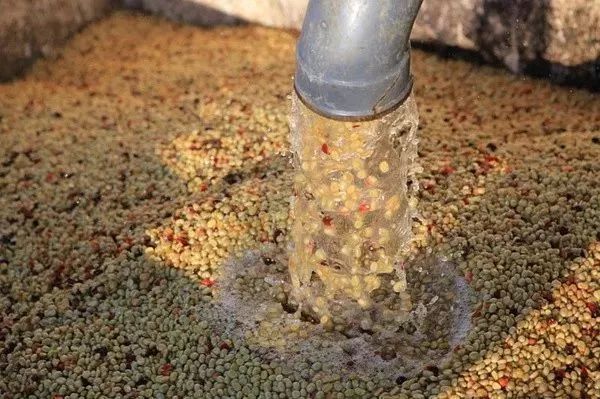
Kenyan 72-hour fermentation washing process
Originated in Kenya, the method of repeated treatment after fermentation is adopted. After harvest, the best cherries are selected for peeling and fermentation. The fermentation time is 24 hours. After 24 hours, clean river water is used. Then, it was fermented again with clean river water for 24 hours, washed again, and repeated three times to reach 72 hours, so it was called Kenyan 72-hour fermentation washing treatment method, referred to as K72.
First washing and fermentation
After harvesting coffee cherries, they will first pass through the proportion of water flow to pick beans. The principle is to use the density and quality difference of coffee fruit itself to make screening; coffee beans with high density (heavy quality) will sink into water, while coffee beans with low density will float. Ripe, high-quality coffee fruits have a high density and are selected for further processing.
After selecting good quality and ripe fruits, peel them off and soak them in water to ferment the pectin mucus attached to the outer layer of raw beans. Pectin has natural sugars and alcohols that are crucial to coffee sweetness development, acidity and overall flavor. Fermentation time up to 24 hours, fermentation can remove 80-90% of pectin, leaving only the flavor of coffee beans.
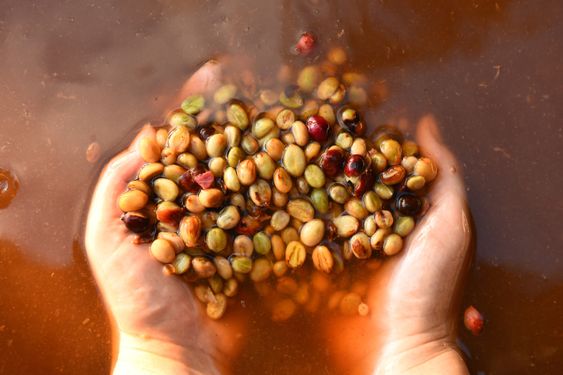
The second washing and fermentation
Then enter the second washing fermentation process, the coffee beans in the previous stage are washed and soaked in water for 24-48 hours. This process increases proteins and amino acids, and the acidity of coffee beans creates complex and delicate layers of taste. Finally, remove all remaining pectin and move the coffee beans to a high shelf for sun drying.
The fermentation time is as long as 24 hours, and after fermentation, 80% of the pectin is removed, leaving only the flavor in the coffee beans.
Finally, remove all the remaining pectin and move the coffee beans to a high scaffolding for sun drying, depending on the weather, which usually takes about 10 days.
Kenyan coffee producing area
The most famous coffee producing areas in Kenya are Thika, Kirinyaga, and the west side of Mount Kenya (Mt. Kenya West, Nyeri, Kiambu, Ruiri and Muranga. Among them, the foothills of Mt.Kenya and Aberdare are the main producing areas.
The flavor of each producing area in Kenya is very different, and Kenya is divided into 47 "counties" (county). Coffee in different counties has distinct characteristics. Coffee trees in Kenya are mostly planted at 1400-2000 meters above sea level and harvested twice a year. The growth areas include Ruiri, Thika, Kirinyaga and Mt. Kenya West, Nyeri, Kiambu and Muranga. Mainly in the foothills of Mt.Kenya and Aberdare. For example, Embu coffee characteristics, balance, citrus fruits, chocolate, apples, acidity. Nyeri coffee features, white grape, juicy, grapefruit and small tomato flavor, fruity, as sweet as caramel.
Major coffee producing areas in Kenya:
NYERI (Neri)
NYERI: Nyeri in central Kenya is home to the extinct volcano Mount Kenya. The red soil in this area breeds the best coffee in Kenya. Agriculture is extremely important here; coffee is the most important crop. Common cooperatives made up of small farmers are more common than large manors. There are two harvests in this area, but coffee from the growing season is usually of high quality. This region is famous for its thick acidity such as blackberries and aromas of flowers and fruits.
Altitude: 1200-2300 m
Harvest period: October to December (main production season), June to August (by-product area)
Varieties: SL-28, SL-34, Ruriu11, Batian.
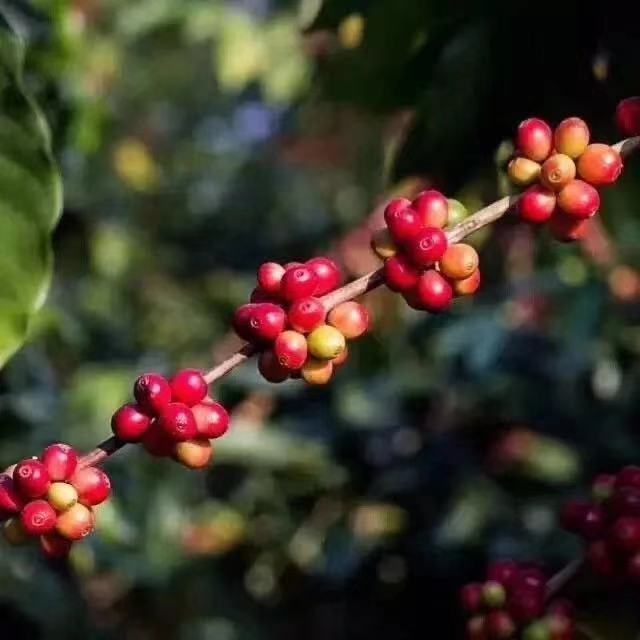
Murang A (Murang diagram)
MULANG A: This district, which belongs to the Central Province, has about 100,000 coffee farmers. This region, not far from Nairobi, was chosen by the first missionaries to settle because Portugal forbade them to live on the coast. This is another region that benefits from volcanic soils, with more coffee smallholders than plantations. There is a brighter acid sensation.
Altitude: 1350~1950 m
Harvest period: October ~ December (main production season), June ~ August (secondary production season)
Varieties: SL-28, SL-34, Ruiru11, Batian
EMBU
EMBU: Near Mount Kenya The name comes from Embu City, where about 70% of the population is engaged in small-scale farming, and the most popular cash crops in the area are tea and coffee. Almost all coffee comes from smallholder farmers, who produce relatively little in this region. The acidity is not as good as Neri, but the flavor is balanced enough.
MERU
MERU: Coffee in this region is mostly grown by small farmers in the Kenyan foothills and Nyambene hills. The name refers to the magnetic field and the Meru people who live there. In the 1930s, they were among the first Kenyans to produce coffee because of the Devonshire White Paper signed in 1923, which recognized the importance of ensuring the rights of African people in Kenya.
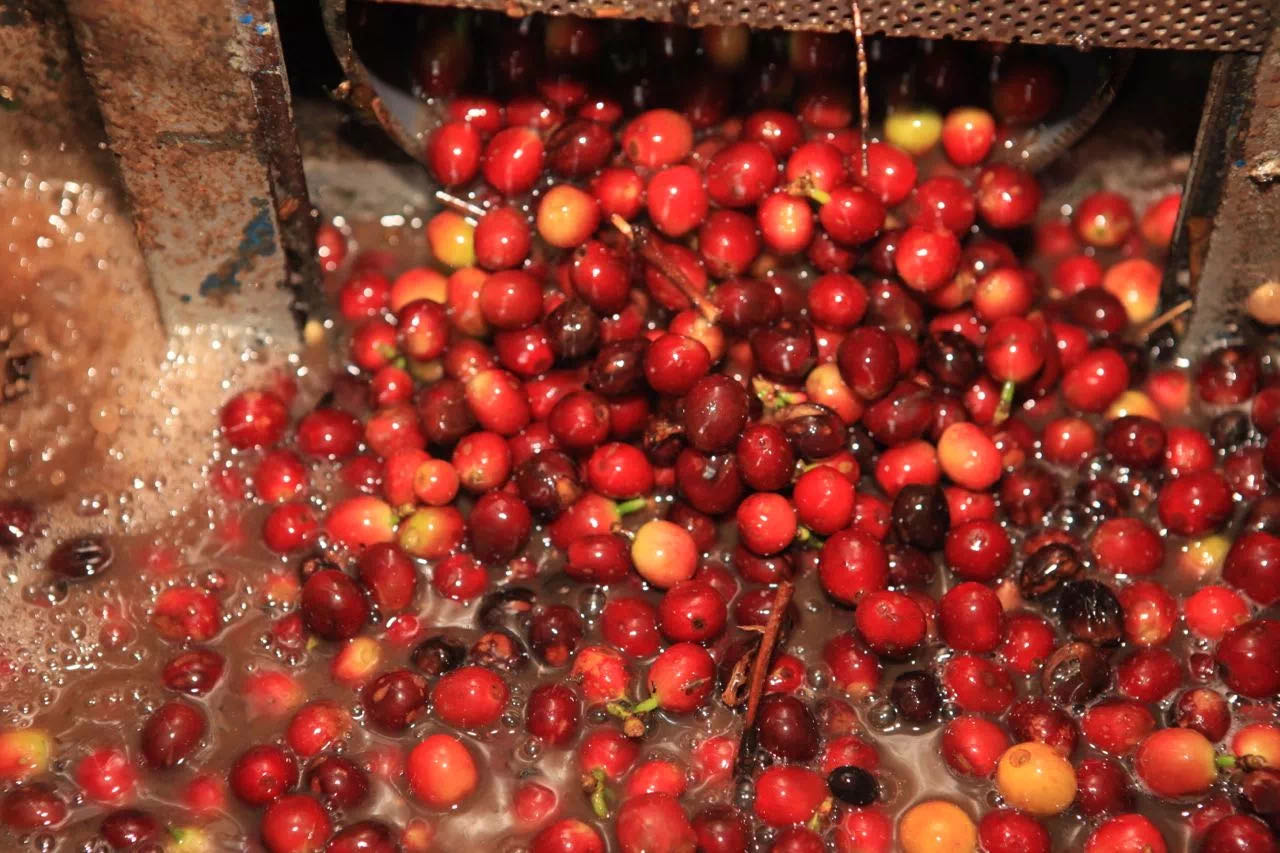
Altitude: 1300 to 1950 m
Harvest period: October to December (main production season), June to August (by-product season)
Varieties: SL-28, SL-34, ruiru11, Batian, K7
KIAMBU (Giambo)
KIAMBU: this producing area in central Kenya has the highest altitude coffee growing area in the region, and Sika also belongs to this producing area. However, some coffee trees at high altitudes can get Dieback and stop growing. This producing area is named after the town of Nakuru. Coffee is grown here in the form of both manors and small farmers, but the yield is relatively small. This producing area is a traditional tea-growing area, and coffee beans have aromas of vanilla and flowers.
Altitude: 1850-2200 m
Harvest period: October to December (main production season), June to August (by-product season)
Varieties: SL-28, SL-34, Ruiru11, Batian
KISII (Kisi)
KISII: this area is located in southwestern Kenya, not far from Lake Victoria, is a relatively small producing area, most coffee beans come from free small producers of common cooperatives.
Altitude: 1450 to 1800 m
Harvest period: October to December (main production season), June to August (by-product season)
Varieties: SL-28, SL-34, Lanshan, K7
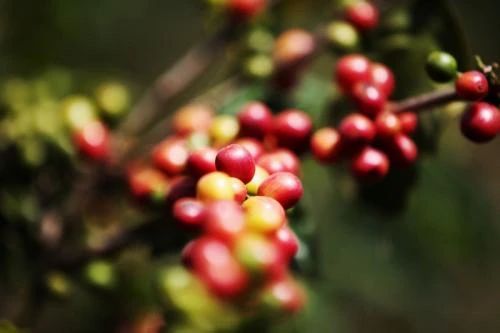
TRANS-NZOIA, KEIYO&MARAKWET (Terrance-Enzoya & Maraquette)
TRANS-NZOIA, KEIYO&MARAKWET: this small producing area in western Kenya has begun to develop in recent years. Mount Elgonne provides a certain altitude, and most of the coffee comes from the manor. Coffee is usually grown to diversify previously exclusive cornfields or dairy farms.
Altitude: 1500 to 1900 m
Harvest period: October to December (main production season), June to August (by-product season)
Varieties: ruiru11, batian, SL-28, SL-34.
KIRINYAGA (Kirinaga)
The producing area is located on the hillside of Mount Kenya, adjacent to Nyeri. It is famous for its strong flavor, rich layers and solid taste of coffee, and Nyeri is recognized as the two best producing areas in Kenya. Most of the producers in this area are small coffee farmers who join the cooperative, while the cooperative plays an integrated role in providing washing plants, while coffee farmers send coffee cherries to the co-operative's processing plant for raw bean processing. It used to refer to Mount Kenya, but when the British colonized, they found the name difficult to remember, so they changed the name of the mountain to Mt Kenya instead of Kirinyaga.
It comes from the Kikuyu, which means "white mountains" and is thought to be the place of the gods. The Kikuyu are the most populous people in Kenya, accounting for 1/5 of the total population.
Altitude: 1300 to 1900 m
Harvest period: October to December (main production season), June to August (by-product season)
Varieties: SL-28, SL-34, Ruiru11, Batian.
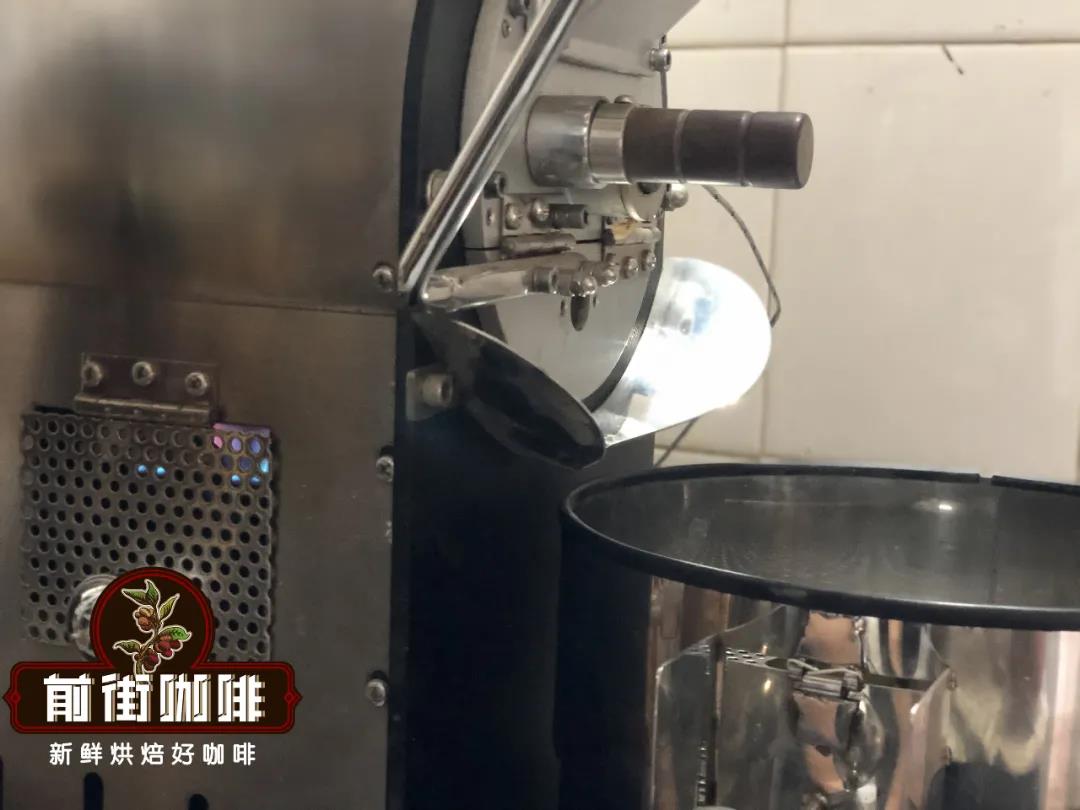
For more boutique coffee beans, please add private Qianjie coffee on Wechat. WeChat account: kaixinguoguo0925
Important Notice :
前街咖啡 FrontStreet Coffee has moved to new addredd:
FrontStreet Coffee Address: 315,Donghua East Road,GuangZhou
Tel:020 38364473
- Prev
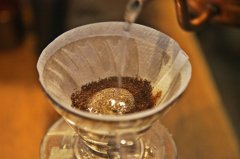
Difference of flavor characteristics between Yejia Xuefei water-washed coffee beans and sun-treated coffee
Distinguish between one and two different methods of processing raw beans: the coffee beans after harvest must immediately enter the treatment process, otherwise they will begin to ferment, making the coffee beans have a bad smell. There are two methods of treatment: solarization and water washing, which will cause different flavors. Sun-cured beans have a complete natural mellow flavor, gentle aroma and more gum; the washing rule has a good mellow taste.
- Next
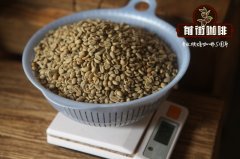
Brazil Ipanema Manor Top Gold Series C26 Liquor Flavor Sun Yellow Kaduai
Ipanema Premier Cru GOLD C26 Wine Chateau Ipanema, Brazil Top Gold Series C26 Wine Flavor countries: Brazil: South Minas Province, Serra da Mantiqueira-Fazenda Rio Verde Block altitude: 1111-1227 m treatment: sun varieties: Huang Kaduai Flavor description: wine, sweet and sour fruit wine, citrus, lychee,
Related
- Detailed explanation of Jadeite planting Land in Panamanian Jadeite Manor introduction to the grading system of Jadeite competitive bidding, Red bid, Green bid and Rose Summer
- Story of Coffee planting in Brenka region of Costa Rica Stonehenge Manor anaerobic heavy honey treatment of flavor mouth
- What's on the barrel of Blue Mountain Coffee beans?
- Can American coffee also pull flowers? How to use hot American style to pull out a good-looking pattern?
- Can you make a cold extract with coffee beans? What is the right proportion for cold-extracted coffee formula?
- Indonesian PWN Gold Mandrine Coffee Origin Features Flavor How to Chong? Mandolin coffee is American.
- A brief introduction to the flavor characteristics of Brazilian yellow bourbon coffee beans
- What is the effect of different water quality on the flavor of cold-extracted coffee? What kind of water is best for brewing coffee?
- Why do you think of Rose Summer whenever you mention Panamanian coffee?
- Introduction to the characteristics of authentic blue mountain coffee bean producing areas? What is the CIB Coffee Authority in Jamaica?

